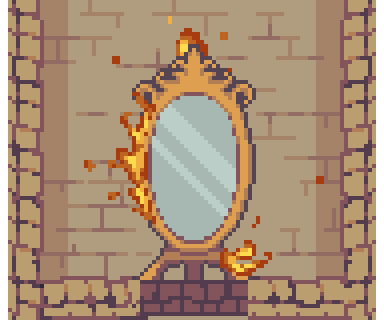From a turn-based PvP to a card-based RTS with a campaign

Each game has a long path from an idea to a release. This path includes various prototypes, an alpha, a beta and early access builds.
A gamedev project has to deal with many difficulties: a concept design, a search for artists and animators, a game engine choice, musical and sound engineering, DevOps, development, testing, legal support. If you are especially interested in one of these topics, please feel free to ask in the comments. I will cover it next time.
For me, game design was always the foundation stone. Game design, as I see it, is what distinguishes a pen-on-a-napkin sketch from a ruleset in the final build.
This is how the idea of Dwarven Skykeep was born — on a napkin. The game was planned as a turn-based strategy about two rival Archmages. Two players build towers, attack each other with spells, having Dwarves fix the consequences. It was quickly realized that randomness is a very important factor in this game. And the best source of randomness is a deck.
So the following concept was born:
The ultimate players’ goal is to destroy the main enemy room: Archmage’s Chambers. They can achieve it in several ways: bring the tower down, burn it, explode it or (if it’s an underground room) flood it. The fact it’s concealed at the start adds some difficulty (and space for manoeuvres). However, you can detect its location with an Eye spell or an Observatory. Even if you managed to do this, the enemy can move it with Dwarf Movers.
What are the game rules?
A turn is divided into phases. Inside each phase, players use their cards to perform actions.
They do it simultaneously, and the phase ends at the same time for both of them.
These are the phases:
- Draw phase. Players draw a card from their decks.
- Repair phase. Players get a chance to use their newly acquired cards to put out fires, fix the broken rooms and pump the water out the dungeon.
- Build phase. Players use block and room cards, expanding the towers.
- Combat spells phase. Players secretly choose their combat spells and their targets.
- Battle phase. “Charged” magic is unleashed and causes damage.
- Second repair phase. Before the fires begin to spread, players can stop them, build Doors, pump water from the flooded Chambers, evading defeat.
- Count phase. Fires spread, damages grow. If Archmage’s Chambers were destroyed or flooded, the player loses.
You might have noticed that a board game asks to be implemented. Indeed, there was a publishing project, but quick prototyping showed that the mechanics were too complex for a tabletop. A box would cost way too much and a separate room would be required for playing. So, the idea was abandoned.
The concept persisted. I started to speculate on making the game more interesting for one player.
New characters were added: Archmage, Dwarves. Later their rivals — Goblins — have arrived. They were nicely animated and from now on could walk freely around the tower. This added life to the game, keeping the original setting.
The game was turn-based no more. Any turn-based game can be made real-time. You can, for example, make a player pay with time for the actions, normally taking a turn. There are 24 hours in a game day or a 3 to 5 real-world minutes. Each player action (building, moving, casting, production) takes several game hours (meaning some seconds of the real-world time). Actions could inter-lap: while one Dwarf is busy crafting things in a Workshop, others can fix the tower. Time becomes a real resource, and the player needs to learn how to use it along with the other (cards, mana, beer).
But the main problem for single player games is a plot. It’s not enough to throw in some loosely connected levels and call it a “campaign”. The player needs to understand the final goal, his actions should affect the world and get him satisfaction from overcoming the game challenges. So, some characters were born (you will see them in the game): a bit unconfident Mage, his assistant Raven (a bit panic-prone) and of course a lot of Dwarves. Together they will move forward through 11 chapters to the final fight with… No spoilers here, sorry.
What about character development? How one level is exactly different from another? After some thought, we decided not to introduce complexity. The game is all about cards, and the player’s progress equals collecting these cards throughout many levels. Yes, there is a deckbuilding. While playing, you will have to choose cards sometimes. Your choice will affect the game strategy in the later stages. Yes, I hope to bring some replayability here.
Anyway, Dwarven Skykeep is still the same tower building game (whatever it takes to keep standing) plus some new activities (like Dwarves vs Goblins melees, beer production and more spells).
The private prototype we are working on will include only the basic strategic mechanics and won’t reveal the plot and some other levels (which are planned for the beta). But it will hopefully show the long path the idea has taken.
Get Dwarven Skykeep
Dwarven Skykeep
Strategical Tower Defence with Platformer Mechanics
| Status | In development |
| Author | Dwarven Skykeep |
| Genre | Strategy, Action, Card Game |
| Tags | 2D, Atmospheric, Magic, Pixel Art, Sandbox, Singleplayer, Tower Defense |
| Languages | English, Russian |
More posts
- Dwarven Skykeep Announcement TrailerMar 08, 2020
- Game World and Game MechanicsApr 25, 2019

Leave a comment
Log in with itch.io to leave a comment.